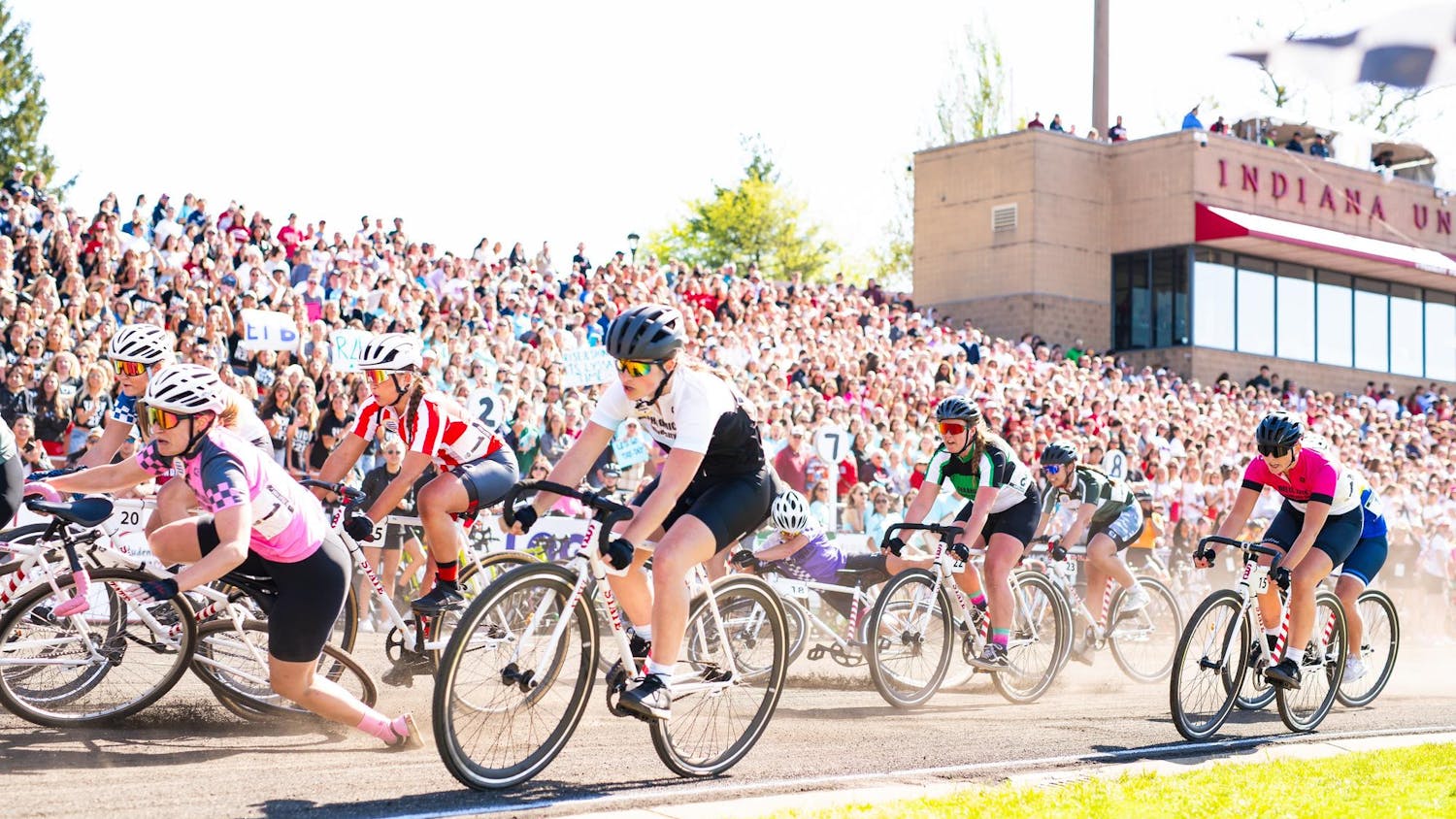The green jersey awarded to the Little 500 pole winner comes with bragging rights, but it doesn’t necessarily go further than that.
Qualifying should help give a better idea of who the threats are come race day, but it isn’t a crystal-clear picture.
During the past 20 years, the eventual race winner came out of one of the first three rows 80 percent of the time. But that means one in every five race winners starts in 10th place or worse.
The 1997 Cutters team won after starting 19th. More recently, Delta Tau Delta rode from 10th to a win in 2012.
The fastest team on qualifying day isn’t necessarily the quickest come race day April 25.
Starting up front does have its obvious benefits that riders are quick to point out.
Teams in the front are less likely to be involved in an early crash. They’ll get their first pick at a pit selection, which can make for easier rider changes, and they’re off to a good start in the Spring Series standings and the fight for the white jersey.
But only three polesitters in the past 20 years have doubled-up to earn the pole and the win. The more popular starting spot for the race winner is actually second, which has won four times, including the defending champion Black Key Bulls.
Number of men’s winners in relation to starting position*
Row 1 – 45% of winners Pole - Three winners 2nd - Four winners 3rd - Two winners.
Row 2 – 25% of winners 4th - Three winners 5th - One winner 6th - One winner.
Row 3 – 10% of winners7th - one winner8th - one winner9th - Zero winners.
Other – 20% of winners 10th -Two winners 13th -One winner 19th -One winner
*This data uses the last 20 races
Phi Delta Theta tries to be second team since 1989 to defend pole
Repeating as the Little 500 polesitter isn’t easy.
In fact, it’s only happened twice since 1989 when Beta Theta Pi took the top spot in 2012 and once again in 2013.
Phi Delta Theta will try to clinch back-to-back poles Saturday led by two returning riders — Rob Lee and Ryan Romenesko — from its 2014 polesitting team.
That’s a strong pair of returning riders, considering Lee was second in ITT’s last year and Romenesko wasn’t far behind in fifth. An offseason of training will no doubt make them among the field’s top riders once again, which will certainly help in qualifying.
The race-experienced Lee and Romenesko will be riding with inexperienced teammates from a pool that includes Collin Brunk, Joe Hanauer, Tibet Spencer, Joseph Steinkamp and Andrew Haffner.
Seniors Hanauer and Brunk were 25th and 37th in ITT’s last season, respectively. Spencer, a junior, rode to 54th.
Their past experience in ITT’s makes them the three most likely riders to fill a maximum of two available positions along with Lee and Romenesko come Saturday.
But as history has shown, repeating as polesitters is no easy task. Phi Delta Theta will have a field of hungry teams eager to knock them off.
Eight teams will fail to qualify
Eight men’s teams will leave the Little 500 track at Bill Armstrong Stadium unhappy Saturday.
Forty-one men’s teams will compete for 33 spots, meaning eight teams will fail to qualify. That’s four more teams than last season.
The increase in teams could make the closing runs very interesting with bumping almost a sure thing. There should also be almost as many as 10 teams risking a third run to get into the race.





